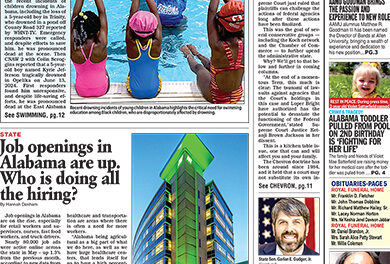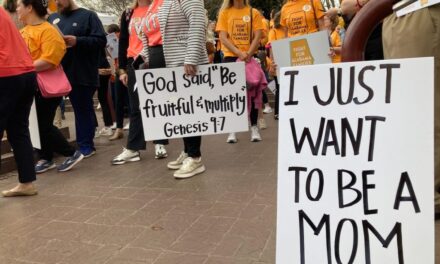By Megan Sayles
AFRO Staff Writer
msayles@afro.com
As the Maryland General Assembly began its 2025 legislative session on Jan. 8, the challenge that took center stage was how to address the state’s critical budget deficit. Maryland is facing a nearly $3 billion budget shortfall for fiscal year 2026, which begins on July 1, 2025.

Credit: (Photo courtesy Unsplash)
Gov. Wes Moore contends that the funding gap the state is facing was forecasted before he took office.
“I inherited a multi-billion-dollar structural deficit. The budget woes that Maryland is facing right now are not new. The Department of Legislative Services has been predicting this since 2019,” Moore told the AFRO. “I inherited this massive structural deficit because budgets were bloating and growth was stalled. That just creates a gap.”
Moore is now set to make $2 billion in spending cuts to his proposed budget, which will be released on Jan. 15. During a press gaggle on Jan. 8, he said the reductions would come from an array of areas though he did not give many specifics.
He noted that the state is working to increase government efficiency as a means of reducing costs. He also indicated that programs to alleviate climate change will sustain cuts, as the incoming federal administration is not likely to fund these initiatives.
“We have to spend on the things that we know are both effective and sustainable and stop investing in things that are not effective or sustainable,” said Moore during the gaggle. “You can’t just continue putting things out that have no chance for long-term sustainability or don’t have a way that you can pay for them.”
In November, analysts from the Department of Legislative Services (DLS) delivered a fiscal briefing to lawmakers, breaking down the funding deficit within the state.
David Romans, fiscal and policy coordinator for DLS, characterized the gap between Maryland’s ongoing spending commitments and revenues as “enormous.” He explained that on its current trajectory, the state would only have enough revenue to cover 84 percent of its expenses by fiscal year 2030.
“That is the largest gap that we have seen in the last 20 years. It is a more significant gap than we saw during the Great Recession,” said Romans in the Nov. 12 briefing. “It’s the result of spending growth growing about 6 percent a year over the next five years, while revenues are projected to grow only 3 percent a year. That reflects that we’ve been in a relatively stagnant period in terms of the Maryland economy. We’re growing but very, very slowly. We have not seen a lot of employment growth.”
He added that the billions of dollars earmarked for the Blueprint for Maryland’s Future, the state’s education plan, combined with growing demand for the state’s child care subsidy and enrollment in Medicaid have led to spending outpacing revenue.
Romans said the incoming White House administration may cause even more challenges for the state’s budget. The president-elect’s impending government efficiency agency may lead to Marylanders losing out on jobs with the federal government. The state also typically rakes in $19 billion for its budget each year. Any federal cuts to aid could put further pressure on the local economy.
“There’s been much discussion about reductions in the federal workforce or relocation of federal agencies outside of the Greater Washington region, which obviously would be harmful to the Maryland economy,” said Romans. “There’s also the risk of some level of federal cutbacks in aid going to state and local governments, which again will present challenges to the state of Maryland.”
Del. Vanessa E. Atterbeary, chair of the Ways and Means Committee, said she is not willing to make cuts to the Blueprint for Maryland Future right now. The education plan, passed in 2021, calls for $3.8 billion in additional annual funding over the next 10 years to increase teacher pay, offer universal pre-K and more.
“We need to take a holistic look at revenues and cuts and see what we can do for the state before we say we’re going to cut the Blueprint or extend any timelines,” said Atterbeary. “I also want to see what’s working and what’s not working in terms of the Blueprint before we cut back on our commitment to teachers and to our students.”
She said the state has to get creative in generating revenue without burdening working-class families. One point of opportunity she mentioned was legalizing i-gaming, or internet gambling. Atterbeary put forth a bill that would have allowed Marylanders to vote on the legalization of the activity but it failed.
“That would have generated $360 to $400 million a year, which would grow each year and be dedicated to education,” said Atterbeary. “We had a lot of protections in the legislation related to responsible gaming and who could have access to i-gaming. There was no way I was passing legislation unless minorities could have an opportunity to participate.”
Though the House passed the bill, Atterbeary said the Senate refused to consider it. Though she initially did not plan to bring the bill back, the poor fiscal outlook in the state has led her to try again.
“There isn’t going to be one panacea that’s going to solve all of our problems,” said Atterbeary. “We can’t cut and paste and put Band-Aids on for short-term fixes. We need multiple long-term solutions. I think i-gaming is one of those creative solutions.”
The post Governor Moore prepares to roll out FY2026 budget as $3 billion deficit looms appeared first on AFRO American Newspapers.











